Do you recall your first trip to a different country, or perhaps, a far-away city? Being new to a foreign country, whether for business or pleasure, can be a life-changing adventure. Stepping into a foreign place can bring different emotions of excitement, confusion, loneliness, or awe. If these thoughts ever ring a bell, then you can definitely relate to Sofia Coppola’s film ‘Lost in Translation’. Have a glimpse of a foreigner’s life in Tokyo through the characters of Bob and Charlotte if you’ve ever wondered what it was like to be in the iconic city during the early 2000s.
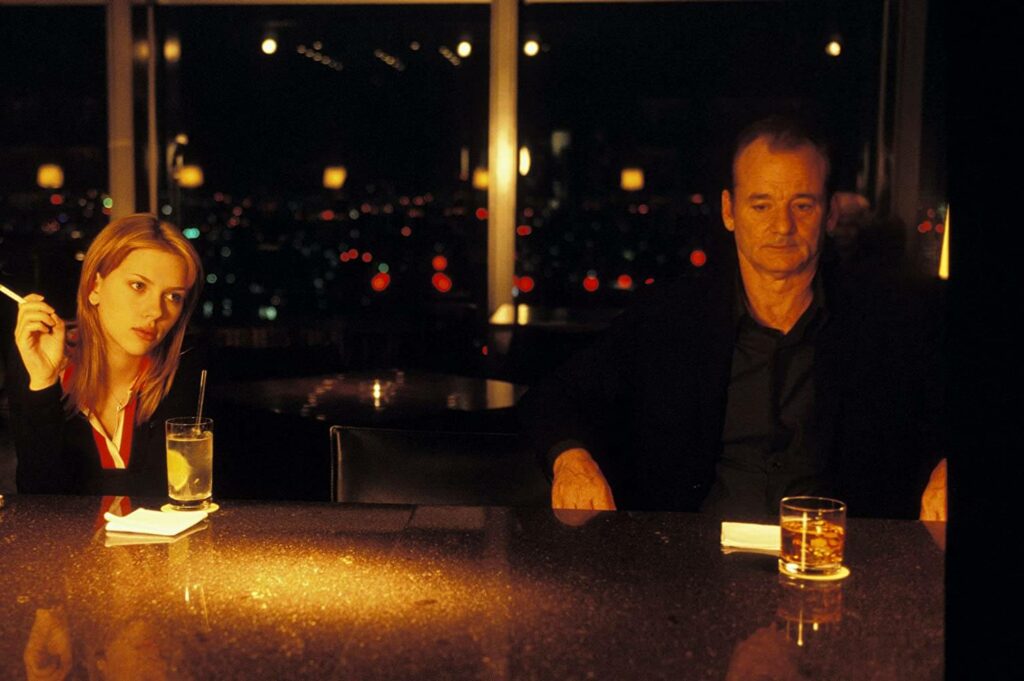
Image Credit: Cinefile
The story of Bob and Charlotte, who met by coincidence at the Park Hyatt Tokyo Hotel, is told in the 2003 film Lost in Translation. Bob, a seasoned actor in his fifties, traveled to Tokyo to film ads for the Suntory Whiskey company. Charlotte, a recent Yale University graduate, is traveling with her husband, a rock band photographer. Both of them feel lost and have a sense of disconnection with all that is happening in their surroundings and lives. Their encounter led them to explore adventures around Tokyo together in and out of their hotel.
The Electric Energy Along Neon Streets
One of the first impressions that the city leaves at night is its neon streets, drawing people in with the sheer scale and intensity of the lights unlike anything most have ever seen. Shimmering signs and billboards pierce the night sky, creating a futuristic urban dreamscape.

Image Credit: Vessels of Gear
In the first few scenes of the movie, Bob is being transported to the Park Hyatt in Tokyo at night after having just arrived in the country’s capital and feeling jetlagged. He is watching the world go by from the solitude of his taxi, not sure if he is awake or dreaming as he stares out the window.
Coppola portrays the neon-lit streets of Tokyo as a fascinating yet alienating setting. The city’s bright energy is enhanced by the vivid colors and chaotic signage, which also highlight the characters’ confusion and loneliness. The neon streets also reflect the cultural clash that the characters were faced with. The neon-lit signs and the Japanese symbols seem both intriguing and incomprehensible as Bob and Charlotte try to understand the city and its customs. Thus, their isolation from their Japanese surroundings due to the language barrier and cultural differences is clearly evident.
Lost in Translation: Neon Streets, Transient Interactions, and the Search for Lasting Bonds
The neon streets’ vibrant nightlife and bustling crowds metaphorically illustrate the city’s transient human interactions. Bob and Charlotte’s chance encounter and shared experiences in Tokyo’s nightlife center reflect the city’s transient, ephemeral neon-lit ambiance.. Their encounters on the neon streets highlight how crucial it is to establish lasting bonds, even if they only last a few seconds. Even as the streets seem alive and animated, the movie portrays moments when one can feel overwhelmed with the feelings of isolation that come with the newness of signs and people encountered along the way.
Entertainment and Skyline Views
The movie’s opening scenes set a dreamlike, magnificent tone in the city at night, piquing the viewer’s interest.
Coppola’s cinematography often highlights Tokyo as a dynamic, breathtaking metropolis, showcasing skyscrapers and vivid lights at Park Hyatt Tokyo’s New York Bar. These scenes reveal Tokyo’s limitless potential, where people can lose themselves.
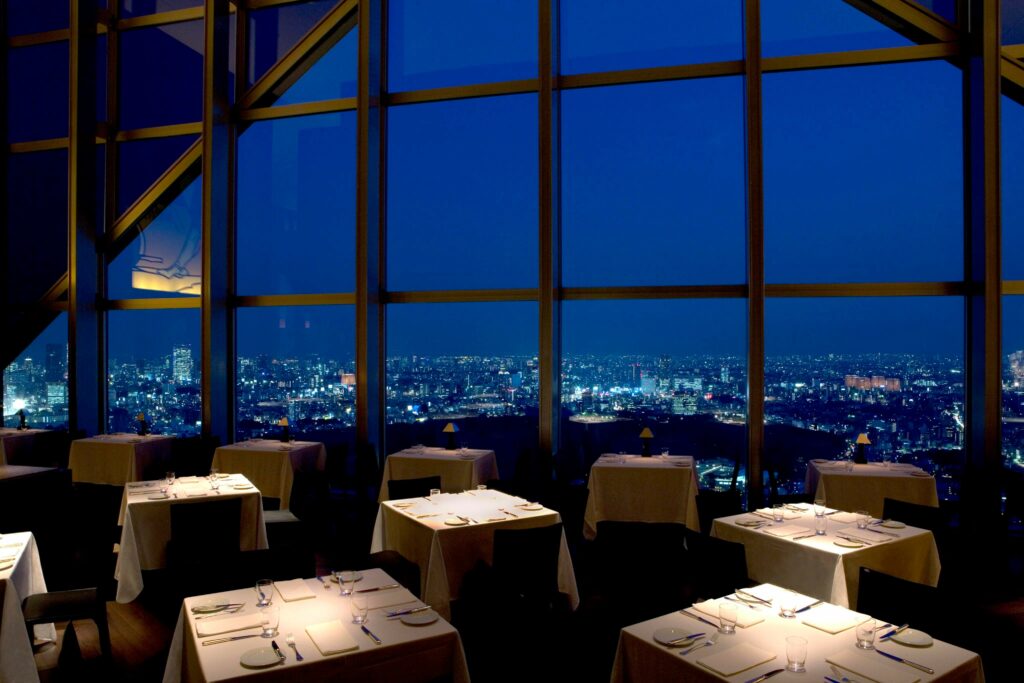
Skyline View from the New York Bar
Image Credit: When In Tokyo
A visual metaphor is created by setting the protagonists’ emotional journeys against the backdrop of Tokyo’s skyline. Skyscrapers in the city stand in for the grandeur and complexity of life, and Bob and Charlotte’s experiences reveal the need for connection and purpose that all people have in this big, lonely world.
Bob explores Tokyo’s entertainment scene while jet-lagged, filming a commercial. Charlotte checks out karaoke bars, nightclubs, and vibrant Shinjuku streets.
Karaoke symbolizes Bob and Charlotte’s growing bond. Their shared music showcases unity and self-expression’s power. It helps people connect beyond loneliness, fostering meaningful city connections.
The Park Hyatt features scenes where Charlotte and Bob live privately, especially in their rooms. These rooms offer reflection, privacy, and relaxation.
Charlotte often uses her room during the day and night. Her bed is the center of her activities and a refuge for her boredom, loneliness, and depression. She knits, watches TV, listens to self-help CDs, decorates a lamp, and battles insomnia. She frequently sits in a chair or on the window ledge to view Tokyo’s vast cityscape from a safe, elevated spot.
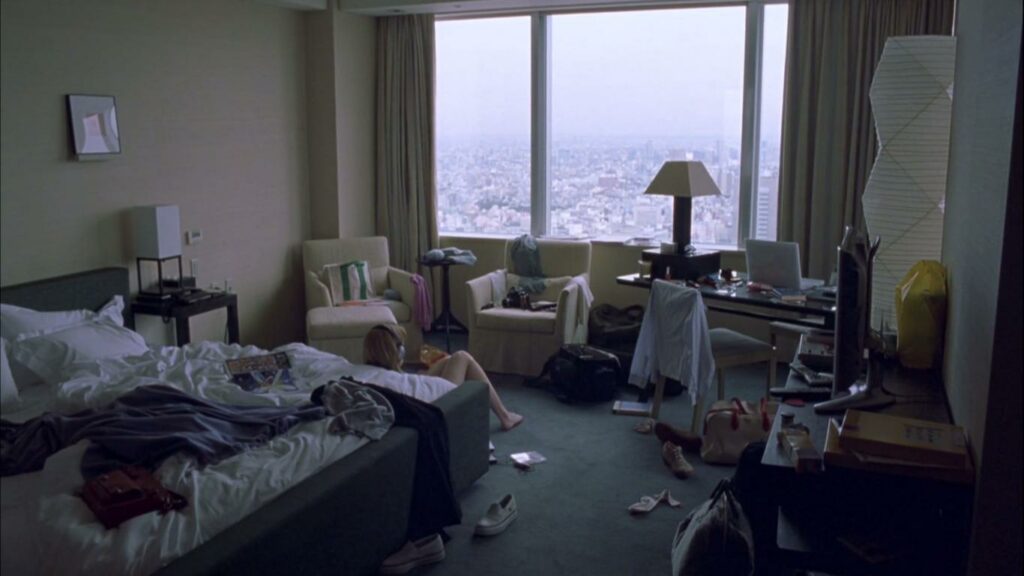
Image Credit: IMDb
Meanwhile, scenes depict Bob’s room as a focal point, highlighting his monotonous routine. He showers, shaves, watches TV, plays mini-golf, and receives calls, faxes, and packages, all disrupting his mild oblivion. During his trip from the airport to the hotel, he marvels at Tokyo, but upon arrival, he shows little interest in the city and overlooks the breathtaking cityscape view from his window.
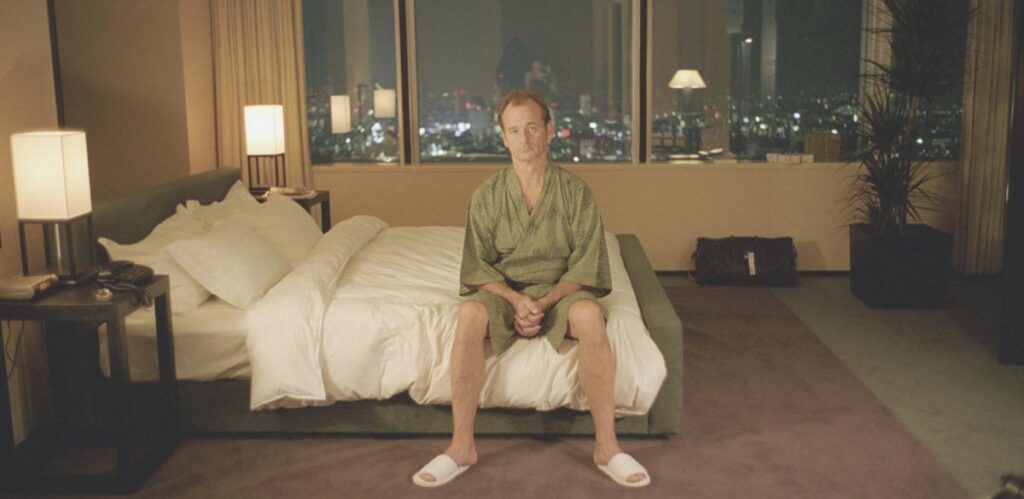
Image Credit: European Film Awards
How Hotel Rooms Represent Lack of Identity in Lost in Translation
These images emphasize the significance of the hotel room, the bed’s role for rest and dreaming, and the body’s incomplete representation and alienation. The characters seek serenity amid internal struggles. Charlotte visits a Tokyo temple, witnessing a ritual with monks chanting and drumming. She later tells her friend Lauren that she “felt nothing” during her short trip, crying on the phone.
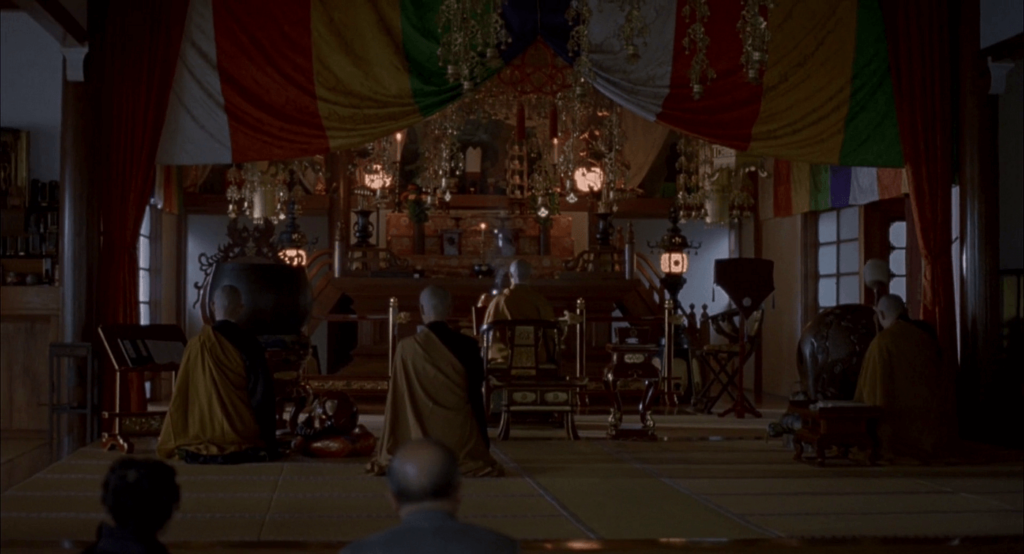
Image Credit: Medium (by call me Ishmael)
In another scene, Charlotte explores the grounds of the well-known Nanzenji temple, a haven of Zen meditation. She ascends the stairs to the Sanmon Gate, where she sees a traditional wedding procession making its way down the temple’s road.
Bob and Charlotte experience quiet solitude both separately and together throughout the movie. These times are characterized by introspection, openness, and a sensation of being fully seen and heard. They bonded over their shared solitary experiences, forging a connection that gave them strength and enabled them to rediscover calm and a fresh sense of direction.















































